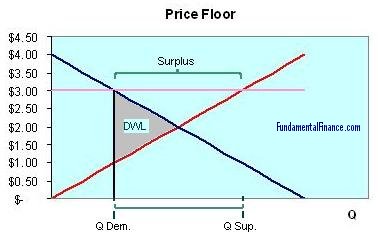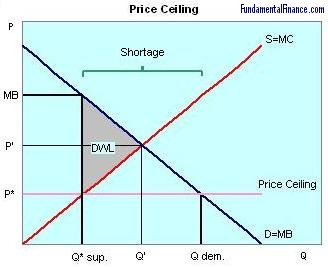All economies aim for an equilibrium point, a point at which quantity demanded and quantity supplied are equal. To reach this point, economies set price floors or price ceiling in order to regulate how much people are paying for their consumption. A price ceiling is a maximum price that can be legally charged for a good. A price floor is a minimum price for a good or service.
However, there are some issues with setting price floors and ceilings. Price ceilings can sometimes lead to shortages, or not enough production, because more people are able to buy the good therefore staying short in production. When it comes to price floors, it can lead to surpluses, extra and unnecessary production. Due to the limit of how low a product can be sold at, less people are going to afford it and buy it therefore there will be extra production or surplus.


No hay comentarios:
Publicar un comentario